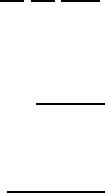 |
|||
|
|
|||
| ||||||||||
|
|  MIL-P-18526A(SH)
(d) A failure is the condition where the structureborne vibration measurement
of the test pump exceeds 115 velocity decibels (VdB) as defined in
MIL-STD-167-1.
Included in the above criteria is a condition
where a problem is identified at an early
stage and the test pump shut down, but would
lead to failure if allowed to continue. Any
failures that occur during the base line test
shall be fully analyzed and corrected to the
satisfaction of NAVSEC prior to resumption of
testing. Occurrence of a failure as defined
above shall result in a complete retest.
4.4.3.5 Run dry test.
Each test pump shall be operated at rated conditions using
grade JP-5 fuel. The suction valve and vent pump suction shall be closed to allow the pump
to run dry. Continue to run the pump for 90 seconds after the flow of oil has ceased, then
stop pump. Upon completion of this test, the pump shall be operated at rated conditions
and the performance characteristics recorded.
Acceptance criteria:
Same as 4.4.2.1.
4.4.3.6 Air ingestion test. Each test pump shall be operated at rated conditions using
grade JP-5 fuel. During operation, air shall be injected into the pump suction at the rates
of 25 percent by volume and the pressure fluctuation shall not exceed plus or minus 20 per-
cent.
Acceptance criteria:
Same as 4.4.3.4.
4.4.3.7 Contamination test. Test agenda and test system design details shall be sub-
mitted by the testing agency to NAVSEC for review and approval. A contamination sampling
plan shall be included as part of the test agenda showing sample tap locations. and identify-
ing sampling and analysis techniques. Approval of the system and acceptance of the testing
procedure shall be prerequisite to certification of the agency for the performance of the
contamination test.
4.4 ,3.7.1 Testing shall be performed using JP-5 fuel, mixed with 1.125 percent of sea
water by volume. The volume of fuel in the system shall be set to provide for one complete
fuel change in 3 minutes when installed pumps are at rated conditions. Test operation shall
consist of each pump operating for 1000 hours at constant speed with rated conditions.
System shall be contaminated with 30 mg/L using the following particulate mix:
Particulate matter (pyritic silicate)
:
25
to 50 micrometers -
10 percent by weight
Initial particulate size:
50
to 100 micrometers -
15 percent by weight
75 percent by weight
100
to 500 micrometers -
4.4.3.7.2 Operation of the test shall be continuous throughout an initial 40 hour run-
in period and during each of the forty 24-hour contaminant cycles. Each 24-hour cycle shall
provide for the contaminant charging, operation, and filtering periods. Charging period shall
be completed in the first hour by the slow injection of four equally spaced charges. To
determine the charge weight for RACH injection, following expression shall be used:
Injection charge (grams) = 0.0075 X fuel test volume (Liters).
During the operation period the average contaminant in the flow stream at the suction side
of each test pump shall not fall below 20 mg/L. In the last hour of the cycle, filtering
shall be performed and provide a background level less than 5 mg/L before recharging at the
beginning of the next cycle.
Acceptance criteria:
(a) A failure is the condition where the speed or torque required by the test
pump to meet rated conditions has increased by 20 percent above the base
line measured during the performance test specified in 4.4.2.1.
(b) Same as criteria (b) through (d) of 4.4.3.4.
4.4.3.7.3 Prior to commencement of the contamination test and. immediately after com-
pletion of the contamination test, the pump shall be disassembled to the extent necessary
and the critical dimensions and. running clearances of parts subject to wear, erosion, and
derangement shall be measured, calculated, and recorded. Components such as pump rotors,
thrust plates, side plates, wear blocks, and casings, etc., subject to corrosion and wear,
the effects of which are not subject to routine measurement, shall be listed in the inspec-
tion record, and after completion of the test the condition of each component determined and
recorded,
18
|
|
Privacy Statement - Press Release - Copyright Information. - Contact Us |